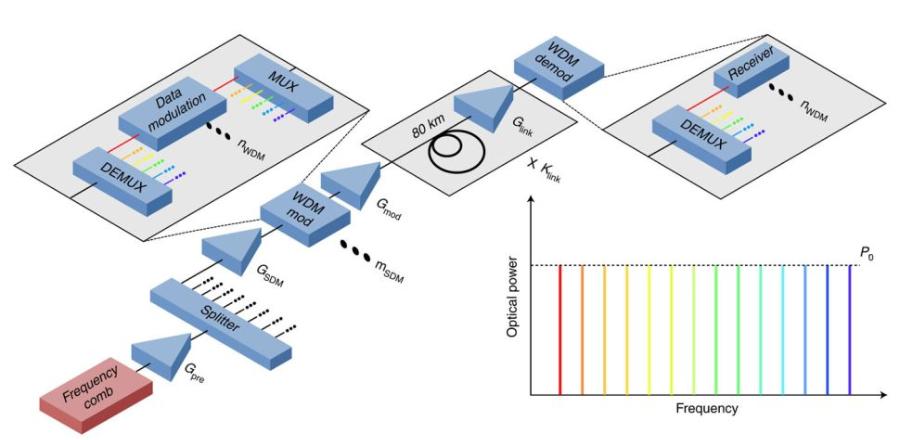Scientists achieve a record 1.84 Petabit/s of data transfer over single fiber optic cable
GadgetByte Nepal
Oct 22, 2022

The demand for broadband communication services has soared in the past 5 years. So, data engineers, and infrastructure are always looking out for new ways to increase the available bandwidth. And recently, scientists have achieved a milestone of 1.84 Petabit/s data transfer via a single optical fiber cable. Let’s learn more about it here. Each line were then split into 223 smaller data chunks that matches different color frequencies on the optical spectrum. This allows for creating a “frequency comb” where data gets transmitted in different colors at the same time without any interference.Scientists called it a “massively parallel space-and-wavelength multiplexed data transmission” system. Data splitting and re-splitting greatly increased the potential data throughput supported by a fiber optic cable.
Each line were then split into 223 smaller data chunks that matches different color frequencies on the optical spectrum. This allows for creating a “frequency comb” where data gets transmitted in different colors at the same time without any interference.Scientists called it a “massively parallel space-and-wavelength multiplexed data transmission” system. Data splitting and re-splitting greatly increased the potential data throughput supported by a fiber optic cable.
1.84 Petabit/s data transfer:
Scientists from the Technical University of Denmark in Copenhagen conducted the research where they were able to transfer 1.84 Petabits of data per second using a standard optical fiber cable in tandem with a photonic chip.To put that into perspective, the average internet bandwidth used by the entire global population is estimated to be around 1 petabit/s. Since photonic chip technology and the transfer medium (optical fiber) use light waves, both have proven to be excellent data conductors.The process
The team of Danish scientists, led by Asbjørn Arvad Jørgensen, also gave insights into how the actual process works. First and foremost, the streams of data used in the trial were split into 37 lines, with each one sent down a different optical thread in the cable.
- Also Read:
Availability Plans
Since the research was done with fiber cables, scientists believe a device can be built to upgrade our existing infrastructure. An optical processing device with a Photonic chip should enable fiber cable to accommodate such high speed. It will be the size of a matchbox that could replace optical data encoders and decoders of comparable size. This could result in an 8,251x increase in data bandwidth in the existing infrastructure.- Meanwhile, check out our review of the iPhone 14 Pro Max.

To say something about myself, I have been writing tech and gadgets from 2021. Although coming from a non technical studies background, I'm someone who is always fascinated by the latest gadget and tech innovations, circling around. Besides writing, you'll find me listening music and aligning the stars through astrology and sometimes even, tarot cards! 😉🧿
Comments
No comments yet. Add a comment to start a discussion



